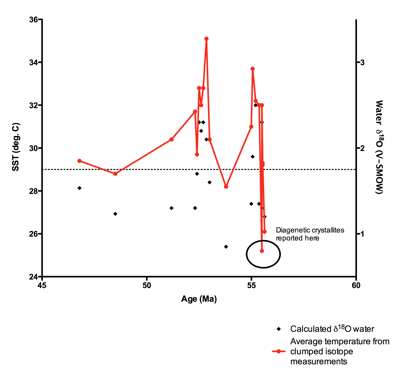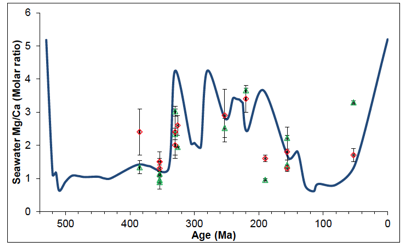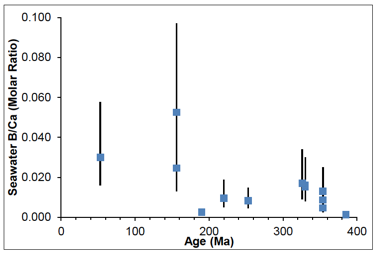Reports: ND252977-ND2: Evolution of Seawater Mg/Ca Ratios: New Constraints from the Carbonate 'Clumped Isotope' Thermometer
Edwin Schauble, PhD, University of California, Los Angeles
These problems are fundamental ones in the geosciences, relating not just to the evolution of life and climate but our understanding of earths sedimentary rock record.
1. To use the recently developed carbonate "clumped" isotope paleothermometry to constrain the mineralization temperatures and extent of diagenesis of early Cenozoic planktic (ocean surface dwelling) foraminfera, and therefore place better constraints on foraminferal based estimates of seawater Mg/Ca.
2. To use the same clumped isotope approach to place constraints on the mineralization temperature of mid-ocean ridge vein carbonates that have previously been used to reconstruct seawater chemistry overt the Phanerozoic (Coggon et al., Science, 2010).
3. The use of secondary ion mass spectrometry (SIMS) to create integrated records of Phanerozoic ocean chemistry from a suite of echinoid fossils previously used to reconstruct seawater Mg/Ca (Dickson, Science, 2002). The SIMS approach is necessary as well-preserved components of these fossils are too small for bulk geochemical analysis.
To date, significant progress has been made on project 1. All samples that are needed from the International Ocean Drilling Program (IODP) are in hand and large numbers of monospecific planktic foraminifera have been prepared for analysis. We have made a number of measurements on Paleogene samples from IODP site 865 from the tropical Pacific Ocean (Figure 1). Clumped isotope temperatures are in the range 28-32°C indicating that at least at this site diagenesis of 45-60 Ma planktic foraminifera is not a pervasive as previously assumed and allows us to make preliminary calculations of the Mg/Ca of seawater now that the influence of temperature on Mg contents can be independently constrained.
Figure 1. Clumped isotope based temperatures and water isotopic compositions from foraminfera from IODP site 865.
Carbonate vein samples have been ordered from the IODP core repository to pursue project 2. The samples are now in hand and have been catalogued, characterized and prepared for geochemical analysis, which will begin in early 2014.
To address project goal 3 we have conducted SIMS analysis on the same suite of exquisitely preserved echinoid fossils previously used by Dickson to reconstruct seawater Mg/Ca using the electron microprobe approach. Using SIMS we have shown we can reproduce Dickson's record (Figure 2) which both increases confidence that our SIMS approach is valid and that Dickson's initial reconstruction is accurate. We have also collected other trace element data on the samples, namely B/Ca and Li/Ca (Figures 3 and 4) that will allow us to make further inferences on the changes of weathering fluxes and changes in oceanic carbonate system over time and their link to secular changes in seawater Mg/Ca.
Figure 2. Seawater Mg/Ca reconstructions based on the chemistry of echinoid fossils. The original electron microprobe based reconstructions of Dickson are represented by red diamonds and our SIMS analyses are plotted as green triangles.
Figure 3. Seawater B/Ca reconstructions based on the chemistry of echinoid fossils.
Figure 4. Seawater Li/Ca reconstructions based on the chemistry of echinoid fossils.















